General Information about KVK Hardoi II
- Name and address of KVK – Krishi Vigyan Kendra, Jaitpur, Barahi, Sandila, Hardoi-241203, kvkhardoi2@gmail.com
- Name and address of host organization- ICAR-Central Soil Salinity Research Institute, Karnal, Hariyana
- Name of the Head of KVK- Dr. Pankaj Nautiyal, pankaj.nautiyal@icar.gov.in
- Year of sanction: 2018
- Total land with KVK (in ha) :
| S. No. | Item | Area (ha) |
| 1 | Under Buildings | Nil |
| 2. | Under Demonstration Units | 1.4 |
| 3. | Under Crops | 8.0 |
| 4. | Horticulture | 1.3 |
| 5. | Pond | 0.4 |
| 6. | Others if any | 6.9 |
| Total | 18.0 |
- Infrastructural Development:
| Sr. No | Name of the Building | Stage |
| 1 | Administrative Building | Under Process |
| 2 | Demonstration Units (1) Vermi-compost | Working |
| 3 | Fencing | Under Construction |
- List of ongoing project in KVK Hardoi II-
| Sl. No. | Project Titles |
| 1 | KVK, Hardoi-II General Contingency & Salary of Permanent Staffs |
| 2 | Revolving Fund of KVK |
| 3 | Cluster FLDs of Pulses at KVK, Hardoi-II |
| 4 | Cluster FLDs of Oilseeds at KVK, Hardoi-II |
| 5 | Out scaling of Natural farming (RKVY) at KVK, Hardoi-II |
| 6 | NCIPM Collaborative project Validation and Promotion of IPM in Context of Natural Farming |
| 7 | Swachhta Action Plan Scheme (SAP) |
| 8 | “Agri-startup Conclave and PM Kisan Samman Sammelan” Scheme |
| 9 | RKVY funded- “Strengthening of Krishi Vigyan Kendra at Hardoi-II |
| 10 | CRM, Project “Promotion of Agricultural Machanization for In-situ Management of Crop Residue |
- Brief progress report of KVK Hardoi II
ICAR-CSSRI RRS Krishi Vigyan Kendra, Hardoi-II organized 22 trainings programmes comprising diverse aspects of production technologies of cereals, oilseeds, pulses, vegetables soil health management, value addition, household food security and women empowerment benefitting a total of 474 participants.
Total 280 Front line demonstrations were conducted at farmer’s field on Pigeon pea, Black gram, Paddy, Dhencha, Millets (Finger millets, Barnyard millets and pearl millets) and kharif Onion during kharif season 2023. KrishiVigyan Kendra,Hardoi-II conducted On farm trial in year 2023 on “Microbial formulations with salt tolerant variety with paddy to alleviate salt stress”, “Salt tolerant variety of paddy with improved management practices in sodic soil” and “Introduction of green manures followed by salt tolerant variety of paddy” and Evaluation of paddy varieties.
To expedite the process of transfer of technology programme the KVK, Hardoi-II organized 25 extension activities with the participation of total 2229 farmers of the district, in which five awareness program, one soil testing campaign four field day three lecture delivered by the scientist of the KVK are included. KVK actively organized “Merilife” campaign programme, and also organized “Meri Mati Mera Desh & Har Ghar Tiranga”. To create awareness for crop residue management and to check burning of paddy and wheat crop residue and to improved soil health with the promotion of bio decomposers developed by ICAR-CSSRI, four awareness programme was organized. In contest of international year of millets 2023 and to create awareness’ for the production and consumption of millets “Sri Anna” two recipe contest were organized in two different blocks (Madhauganj & Bharawan) of the Hardoi district. At KVK farm activities, seed production of four varieties of each crops Paddy, Finger millets, Barnyard millets, Kodon and pearl millets and crop cafeteria (thirteen varieties).
 |
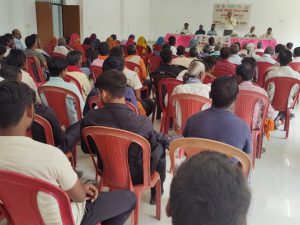 |
 |
 |
 |
 |
 |
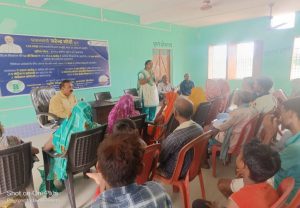 |
 |
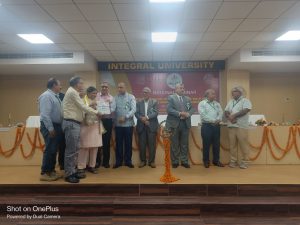 |
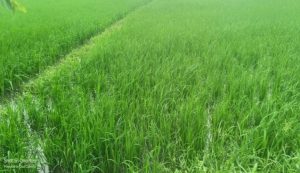 |
 |
- Staff Position (as on 6th December, 2024)
| Sl.
No. |
Name of the incumbent | Designation | Discipline | Mobile No. | Email id | Photograph |
| 1 | Dr.Pankaj Nautiyal | Sr. Scientist & Head | Horticulture | 9412394661 | Pankaj.nautiyal@icar.gov.in
drpankajnautiyal@gmail.com |
 |
| 2 | Smt. Anjali Sahu | SMS | Home Science | 9839593621 | anjalisah13march@gmail.com |  |
| 3 | Dr. Trilok Nath Rai | SMS | Soil Science | 7991343345 | tnrai_78@rediffmail.com |  |
| 4 | Dr.Traloki Singh | SMS | Agronomy | 7486077666 | tralokisingh@gmail.com |  |
| 5 | Mr. Mohit Singh | SMS | Agricultural Extension | 9634190100 | mohitchaudhary199825@gmail.com |  |
| 6 | Ms. Thanga Anusya S | SMS | Fisheries Resource Management | 9944180503 | anusya1507@gmail.com | 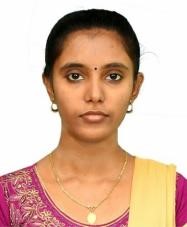 |
| 7 | Mr. Sombir | Driver | – | 8059055033 |
- DETAILS OF THE DISTRICT
District Profile
Hardoi district is a district of Lucknow Division of Uttar Pradesh. It lies between 26′-53″ to 27″-31’North Latitude and 79′-41″ to 80′-46″ East Longitude. Its north border touches Shahjahanpur & Lakhimpur Kheri Districts. Lucknow and Unnao are Situated at south border, West Borders touches Kanpur & Farrukhabad and on eastern border Gomti river separates the district from Sitapur.
District Hardoi comprises of 5 tehsils (Hardoi, Shahabad, Bilgram, Sandila & Sawayajpur), 19 blocks, 191 Nyay, Panchayat, 1101 Gram Sabha & 1901 habited revenue villages.
It also has 7 Nagar Palika Parishads & 6 Nagar Panchayats. Geographical area is 5947 sq. km.
As per census 2011, Population of the district is 4091380, out of which Female are 1887116 & Male are 2204264.
History
According to general conventions hardoi district is related with “HIRNAKASHYAP” its present name hardoi is a distorted version of its earlier name “HARIDROHI “. In view of some people this district was colonized by Hardevbaksh and just because of this reason there is an old locality Hardevganj exists in the city. Mallawa, Bilgram, Pihani, Shahabad, Sandila & Ruiyaa are the places of historical significance. According to some historians Mallawa was colonized by Buddhists while some believed that Sayyed Salar Masood Gazi came here. Earlier this area Mallawa was district headquarter. The ancient name of Bilgram is “SRINAGAR” its present name Bilgram was given by some associates of .Mahmood Gajnavi.Pihani is derived by persian word Pinhani (place of shelter), it is believed that king of Moughal dynasty Humayun took shelter in the forest of Pihani when he was defeated by Shershah Suri. Pihani is also related with the minister Sadarejahan of Emperor Akbar. His tomb and paintings are still here.According to the view of some people, Sandila was colonized by Rishi Sandilya. Sandila is also famous for old buildings,
mosque & barakhamba.

2.1 Micro-farming situations
- a) Characteristics
| S. No. | Agro-Ecological situations (AES) | Existing Farming System(Crop+ livestock+ others) | Major soil types |
| 1. | Zone–IVCentral Plain zone | Agriculture | Sandy loam to Clay loam, Saline Alkali and Calcareous |
| Agriculture + Horticulture | Sandy loam to Clay loam, Saline Alkali and Calcareous | ||
| Horticulture | Sandy loam to Clay loam, Saline Alkali and Calcareous | ||
| Livestock | Sandy loam to Clay loam, Saline Alkali and Calcareous | ||
| Agriculture + Livestock | Sandy loam to Clay loam, Saline Alkali and Calcareous | ||
| Agriculture + Livestock + Horticulture | Sandy loam to Clay loam, Saline Alkali and Calcareous | ||
| Agriculture+ Allied | Sandy loam to Clay loam, Saline Alkali and Calcareous |
- b) Land Characteristics
| S.No | Agro-Ecological Situation (AES) | Topography | Drainage |
| 1. | AES- Zone–IVCentral Plain zone | Undulated & Plain | Surface drainage system |
- c) AES-wise major problems
| S.No | Agro-Ecological Situation (AES) | Major problems | Rank |
| 1. | AES-1 (Name) | High level of sodicity of soil, | I |
| Unawareness about salt tolerant varieties, | II | ||
| Unawareness about Integrated farming system | III | ||
| Traditional method of cultivation, | IV | ||
| Use of imbalance fertilizer | V | ||
| Poor livestock management & orchard management. | VI | ||
| Nutritional deficiency among children ,adolescent girls & Rural women | VII | ||
| Lack of entrepreneurs in agriculture and allied fields | VIII | ||
| Poor knowledge Level about govt. scheme | IX | ||
| Limited access to digital marketing chain | X |
2.2. Area, Production and Productivity of major crops cultivated in the district (2022-23)
| S. No | Crop | Area(ha) | Production(MT.) | Productivity(Qt./ha) | Yield gap (q/h-a) with respect to demo | Yield gap (q/ha) with respect to potential yield |
| 1 | Paddy | 152841 | 438042 | 28.56 | 16.4 | 17.43q (in salt affected soil) |
| 2 | Wheat | 331442 | 1209534 | 36.45 | 5.9 | 24.55 |
| 3 | Maize | 35671 | 84005 | 23.55 | – | – |
| 4 | Sorghum | 4528 | 4560 | 10.07 | – | – |
| 5 | Pearl Millet | 3218 | 4949 | 15.38 | 3.18 | 11.2 |
| 6 | Barley | 1765 | 4080 | 23.12 | 11.5 | 30.0 |
| 7 | Black gram | 15804 | 9309 | 05.89 | 7.13 | 9.52 |
| 8 | Green gram | 284 | 173 | 06.09 | 2.2 | 3.10 |
| 9 | Ground nut | 8047 | 9222 | 11.46 | – | – |
| 10 | Pigeon pea | 1540 | 788 | 05.12 | 4.7 | 6.3 |
| 11 | Sesamum | 18206 | 11417 | 06.24 | .4 | 2.60 |
| 12 | Sunflower | 465 | 798 | 17.17 | – | – |
| 13 | Mustard | 11929 | 11450 | 09.60 | 6.7 | 9.0 |
| 14 | Sugarcane | 32516 | 1834293 | 564.12 | – | – |
| 15 | Potato | 10815 | 196173 | 181.39 | – | – |
| 16 | Gram | 722 | 779 | 10.75 | 3.98 | .11.75 |
| 17 | Pea | 1067 | 1352 | 12.67 | – | – |
| 18 | Lentil | 8939 | 8599 | 09.62 | 0.21 | .55 |
| 19 | Total Oilseed | 42067 | 28184 | 42.12 | – | – |
| 20 | Total Pulses | 37450 | 27091 | 7.23 | – | – |
| 21 | Total Cereals | 566294 | 1601597 | 28.39 | – | – |
| Horticulture | ||||||
| 1 | Onion | 455 | 3640 | 08.00 | – | – |
| 2 | Vegetable | 16470 | 98820 | 06.00 | – | – |
| 3 | Mango | 6599 | 17810 | 02.69 | – | – |
| 4 | Guava | 341 | 3571 | 10.47 | – | – |
| 5 | Papaya | 35 | 1050 | 30.00 | – | – |
| 6 | Garlic | 115 | 461 | 00.61 | – | – |
| 7 | Cucumber | 5050 | 75750 | 15 | – | – |
Source: District Agriculture Department.
2.4 Details of Operational area / Villages
| Taluka | Name of the block | Name of the village | Major crops & enterprises | Existing yield(q/ha, number/year) | Major problem identified | Identified Thrust Areas |
| Sandila | Sandila | Meera Kheda, Madarikheda,Sarwa,
Barriya, Barahi, Purwaman, Kalyanpur, Haniya, Sukhaukheda, Surjikheda, Shivpuri, Tiloiya khurd, Mohammadpur, Babhnauwa, Dhikunni, Kanora, Sikrori |
Wheat, Paddy, Sesame, Groundnut, Black gram, Green gram, Pigeon pea, Barley, Mustard, Toria, Potato, Sugarcane, Vegetables, Maize, Pearl Millet, Sorghum,Mango, Guava, Chest nut,Dairy | Wheat-22-25q/ha, Paddy-28-27q/ha,Mustard-10-11q/ha
Groundnut-8-11q/ha, Black gram-5-8q/ha, Green gram-6-7q/ha Maize- 18-20q/ha, Bajra—7-9q/ha Pigeon pea -7-8q/ha Barley 20-22q/ha |
High level of sodicity & salinity of soil,non availability of salt tolerant varieties, non availability of quality seed, use of imbalance fertilizer, traditional method of cultivation, Poor livestock management , Poor condition of orchard management. | -Dissemination of low cost reclamation technology & Introduction of salt tolerant varieties of rice, wheat, mustard and gram- Promotion of Natural Farming, organic farming & resource conservation technologies
-Promotion of Eat right practices to get nutritional security as well as food security -Entrepreneurship development through imparting skills in rural youth and farm women -Promotion of digitalization for benefit of farming community |
| Bharawan | Narohiya,Chawan, Sambhalkheda,
Aira, Singhpur, Mahamadpur, Paharpur, Etaunja, Koili, Harigawan, Bilaria,Kukura,Kukuri,Newada vijay, Rudauli,Mishrikheda,Peepargaon, Newada, Bargadiya, Godwapatti, Manpur, Majhgaoun |
|||||
| Bilgram | BilgramMadhauganj
Mallawan |
Bilgram | ||||
| Saraiud, Newly Saraiya, Khurda Madarpur, Kosiya Goswan, Sahora | ||||||
| Sahjana, Mallanwa, Kokatmau | ||||||
| Hardoi | Hardoi | Bilgram Chungi | ||||
| Kothawan | Bhaingaun , Purwa Bajirao, Kamlapur, Umariya Behriya, Bilgram Chungi | |||||
| Sursa | Kasranwan | |||||
| Ahrori | Lodhi, | |||||
| Kachhona | Kachhona | |||||
| Benhadar | Bagh Doda, Bhagwantpur |
2.5 b The methodology for identifying OFTs in 3 Villages: (Complete PRA of three villages in Annexure II )
i) PRA Tools
-
- Semi Structured interview of key information for village Basic information.
- Village Transact- NRM (land type and water source)
- Agro ecology map
- Resource map
- Social map
- Venn Diagram
- Mobility map
- Time line – historical perspective
- Trend analysis – different decades
ii) Problem identified from Matrix based ranking & analysis
iii) Field level observations
iv). Farmer group discussions
Conducting PRA to Understand Resources, Problems, Problem, Assess Relationship and Training/Demonstration Need ( in Annexure II)
Major Problems and Causes in crop cultivation in selected villages
| Causes/ Problems | G score | Rank | Possible solution |
| Poor yield due to high saline soil | 78.75 | I | Management of saline soil with improved variety and use of bio formulation developed by CSSRI |
| Poor yield due to high alkali soil | 74.25 | II | Management of alkali soil with improved variety and use of bio formulation |
| Poor drainage problem | 68.25 | III | Proper drainage management and IFS model devolved by CSSRI |
| Unavailability of quality seeds | 58.50 | IV | Cluster demonstration and Convergence with state line department for seed availability. |
| High cost of input | 49.50 | V | Convergence with line department for large scale demo |
| Lack of knowledge | 42.25 | VI | Capacity building and Demonstrations and Awareness programme |


2.6: Major problems:
| Ø High level of Soil Salinity (2-4 ds/m). |
| Ø High level of Soil Sodicity (pH 8-11) |
| Ø Poor Drainage problem |
| Ø Unavailability of quality seed. |
| Ø Use of imbalance fertilizer. |
| Ø Poor livestock management & orchard management. |
| Ø Nutritional deficiency among children ,adolescent girls & Rural women. |
| Ø Lack of entrepreneurs in agriculture and allied fields. |
| Ø Poor knowledge Level about govt. scheme. |
| Ø Limited access to digital marketing chain. |
Priority Thrust Areas:
- Introduction of salt tolerant varieties of major crops.
- Dissemination of low cost reclamation technology for sodicity.
- Promotion of Natural Farming, organic farming & resource conservation technologies
- Entrepreneurship development through imparting skills in rural youth and farm women
List of ongoing project in KVK Hardoi II-
| Sl. No. | Project Code in MIS-FMS | Project Titles |
| 1 | 1012309 | KVK, Hardoi-II General Contingency & Salary of Permanent Staffs |
| 2 | 1013622 | Revolving Fund of KVK |
| 3 | 1013988 | Cluster FLDs of Pulses at KVK, Hardoi-II |
| 4 | 1013989 | Cluster FLDs of Oilseeds at KVK, Hardoi-II |
| 5 | 1013990 | Out scaling of Natural farming (RKVY) at KVK, Hardoi-II |
| 6 | 1013991 | NCIPM Collaborative project Validation and Promotion of IPM in Context of Natural Farming |
| 7 | 1014238 | Swachhta Action Plan Scheme (SAP) |
| 8 | 1014239 | “Agri-startup Conclave and PM Kisan Samman Sammelan” Scheme |
| 9 | 1014251 | RKVY funded- “Strengthening of Krishi Vigyan Kendra at Hardoi-II |
| 10 | 1014746 | CRM, Project “Promotion of Agricultural Machanization for In-situ Management of Crop Residue under Scheme Code: 9145” |


